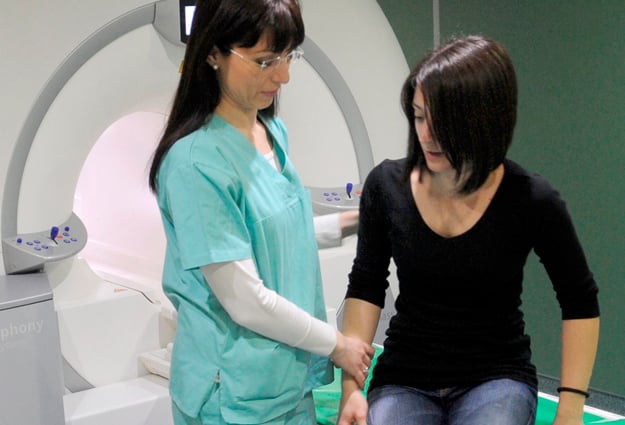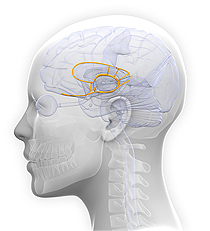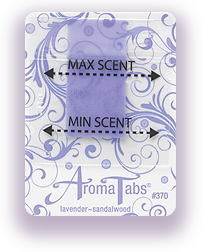
"I'm on my way to get an MRI and I'm already freaking out!"
So began a friend's Facebook status last week. It didn't take long for the engagement to begin: "Didn't they give you a tranquilizer?" "You should definitely ask them to sedate you!" "OMG I hate those things! Even in an open one you still get claustrophobic!" "Dude, just close your eyes, focus on the music, and you'll be ok." And so on and so on...

Not only was my friend a wreck for his scan, I'm betting too, the MRI technologist who had to scan him wasn't too thrilled about it either. Let's face it - the more stressed out the patient, the harder it is to get a good exam. This holds true no matter where you work in healthcare.
Of course, I had to throw in my two cents and tell my friend to ask if his imaging center had AromaTabs.
Aside from the shameless, but still very well-intentioned, plug for my company's aromatherapy product, a growing number of health care facilities are integrating aromatherapy and other holistic treatments, as complimentary alternative modalities (CAM) into their daily operations as a way to enhance their patient experience. As patient satisfaction scores become increasingly tied to reimbursement rates, improving the patient experience is on every healthcare executive's mind these days.
So how does aromatherapy help as a complimentary alternative modality?
Our sense of smell is 10,000 times more sensitive than any of our other senses and recognition of smell is immediate. Inhaled vaporized odor molecules can bring back a flood of memories, influence people's moods, and even affect their work behavior. Smell can call up memories and powerful responses almost instantaneously. A funny example of this is how the smell of mothballs, which probably should be unpleasant, brings back fond memories of family gatherings at my Grandpa Luigi's house - raucous laughter, good food, fun, and lots of love. To me, mothballs smell like my grandfather's house, not the other way around.
 The reason for this is that the olfactory bulb is part of the brain's limbic system - an area so closely associated with memory and feeling, that it is also called the "primitive" or "emotional brain." This system is a network of connected structures near the middle of the brain linked with the central nervous system that includes the adrenals, the pituitary gland and the hypothalamus, which regulate the body's heart rate, blood pressure, stress, and breathing.
The reason for this is that the olfactory bulb is part of the brain's limbic system - an area so closely associated with memory and feeling, that it is also called the "primitive" or "emotional brain." This system is a network of connected structures near the middle of the brain linked with the central nervous system that includes the adrenals, the pituitary gland and the hypothalamus, which regulate the body's heart rate, blood pressure, stress, and breathing.
Essentially, the limbic system deals with instinctive or automatic behaviors - including our fight or flight responses - and has little, if anything, to do with conscious thought or will. Just like my friend's reaction to the prospect of his MRI.
Not to be confused with fragrances or perfumes, which are mostly synthetic scents, Aromatherapy as CAM employs 100% pure essential oils (plant extracts made from leaves, roots, seeds, etc.) to use this mind/body reaction to aromas. The goal is to help people get relief from anxiety and other ailments in a natural way and lessen the need for drugs. Multiple studies ( see additional resources at the end of this post) indicate that certain essential oils do have specific properties to help alter one's mood and cognitive or physical well-being.
Does it work?
I have to admit that I was initially skeptical, attributing much to the placebo effect, until the testimonials from both clinicians and technologists started rolling in after we first introduced AromaTabs, aromatherapy for the clinical setting.
for the clinical setting.
What was particularly striking was the effort put in by patients given an AromaTab by their healthcare provider into finding out who made them in order to tell us about how much they helped or to ask they can purchase them for their own personal use! You can bet that if people are taking that much trouble to tell the manufacturer about their positive experience after leaving your facility, they are also talking about it with their friends and family too.
Whether it's the 100% pure essential oils or simply the personal touch of offering something tangible to help reduce anxiety, this simple little product grew some very long legs and is now being used anywhere patient (and even staff or family member) anxiety can arise - from diagnostic and interventional imaging, radiation oncology, pre and post-op rooms, to nursing homes, hospices, and even phlebotomy.
If you are a healthcare provider seeking to integrate aromatherapy as a CAM service, or are simply looking for an easy to implement and cost-effective way to augment your efforts in creating an extraordinary patient experience, ask us about AromaTabs. We also have available a Certified Aromatherapist to help answer any questions on how to implement a CAM service or set up an evidence based study.
Additional Resources:
- The Effect of Inhalation of Aromatherapy Blend containing Lavender Essential Oil on Cesarean Postoperative Pain.
- Effect of aromatherapy with orange essential oil on salivary cortisol and pulse rate in children during dental treatment: A randomized controlled clinical trial.
- Aromatherapy: does it help to relieve pain, depression, anxiety, and stress in community-dwelling older persons?
- Assessing the metabolic effects of aromatherapy in human volunteers
- The effect of lavender oil on stress, bispectral index values, and needle insertion pain in volunteers.
- Examination of the effectiveness of peppermint aromatherapy on nausea in women post C-section.
- Evaluation of the effect of aromatherapy with lavender essential oil on post-tonsillectomy pain in pediatric patients: a randomized controlled trial.

Mary Lang Pelton
Director of Marketing Communications
